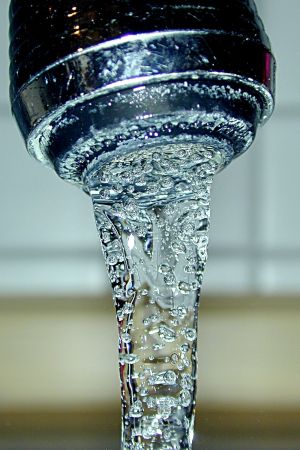 |
| Photo by Tomas Castel |
Drought is a part of life in Australia. Our great rivers, the Murray Darling System, the Murrumbidgee and others are often little more than sluggish brown streams. Salt laden, polluted and full of nitrates from fertiliser run off, this is where much of Australia’s drinking water comes from.
The water management strategies employed by our politicians often seem to be aimed at giving history the opportunity to remember the politicians for the landmark projects they created rather than remembering them for developing effective and inclusive strategies that provide real results and benefits for the environment.
Desalination seems to be regarded by many as the panacea for all that ails our water systems while storm water harvesting and treating sewage to recycle as drinking water are often overlooked.
Treated sewage provides a convenient resource and here’s how it could get from the home back to our tap.
In large cities around the globe, sewage and waste-water is collected from homes and storm-water drains via a sewerage system and then it gets processed at a treatment plant.
At the first stage the sewage passes through a filter to remove large materials like tree limbs, garbage, plastics and large organic matter. From there it passes to the primary sedimentation tank, where sludge settles to the bottom and lighter liquids like grease, oil and soap rise to the top. The surface is skimmed off while the sludge is pumped away to a separate treatment facility.
From there, it’s pumped to another tank where bacteria breaks down any remaining organic matter in the wastewater, oxygen is pumped into the fluid to encourage the bacterial activity. The next step is more filtering, microfiltration that removes suspended solids, protozoa, bacteria, and some viruses.
The last step is to disinfect the water, often by the addition of chlorine, hydrogen peroxide and other chemicals and by running it past high intensity ultraviolet lights.
 Image via WikipediaFrom here it can be “shandied” into the water supply pipeline or other ways like a river, or pumped into the ground, where it is reintroduced into the below-ground water supply.
Image via WikipediaFrom here it can be “shandied” into the water supply pipeline or other ways like a river, or pumped into the ground, where it is reintroduced into the below-ground water supply. Years later, after natural filtration, the water is extracted as part the wider supply network. It is all treated together as part of our domestic water supply.
So, what’s the problem with this? The treated water itself is often cleaner (purer) than the original source water before treatment.
Almost everyone lives downstream of someone or something, so the raw product that's turned into our drinking water today isn't so pristine after all.
As reported in the Melbourne Age in 2008:
"The Victorian government is opposed to the drinking of recycled sewage, despite a study in 2006 finding it could be done in Melbourne at less financial and environmental cost than seawater desalination.
Despite the policy ban, many Victorian towns along the Murray River effectively drink recycled sewage already, by taking their drinking supplies from rivers that are boosted by the treated wastewater of towns upstream."
Maybe taking a long, hard and rational look at this technology isn't such a bad idea?
The technology exists and is at work in places like Orange County, California, so it’s not a technical issue that's stopping the wider adoption of this alternative, it’s all psychological and part 2 delves into this issue.
Almost everyone lives downstream of someone or something, so the raw product that's turned into our drinking water today isn't so pristine after all.
As reported in the Melbourne Age in 2008:
"The Victorian government is opposed to the drinking of recycled sewage, despite a study in 2006 finding it could be done in Melbourne at less financial and environmental cost than seawater desalination.
Despite the policy ban, many Victorian towns along the Murray River effectively drink recycled sewage already, by taking their drinking supplies from rivers that are boosted by the treated wastewater of towns upstream."
Maybe taking a long, hard and rational look at this technology isn't such a bad idea?
The technology exists and is at work in places like Orange County, California, so it’s not a technical issue that's stopping the wider adoption of this alternative, it’s all psychological and part 2 delves into this issue.

No comments:
Post a Comment
Feel free to comment: agree or disagree, I have pretty thick skin.
Anything abusive or defamatory won't be posted.